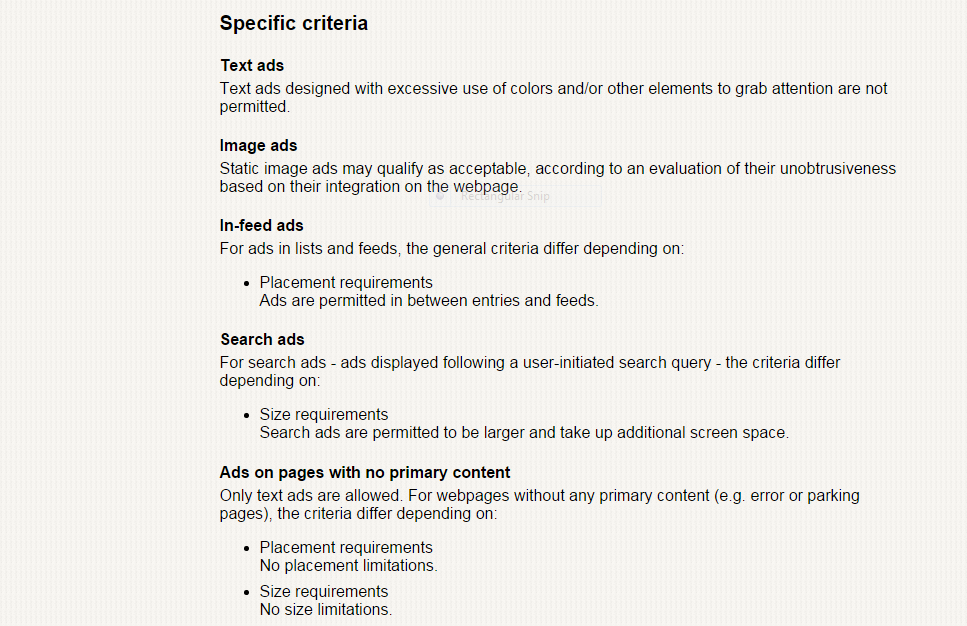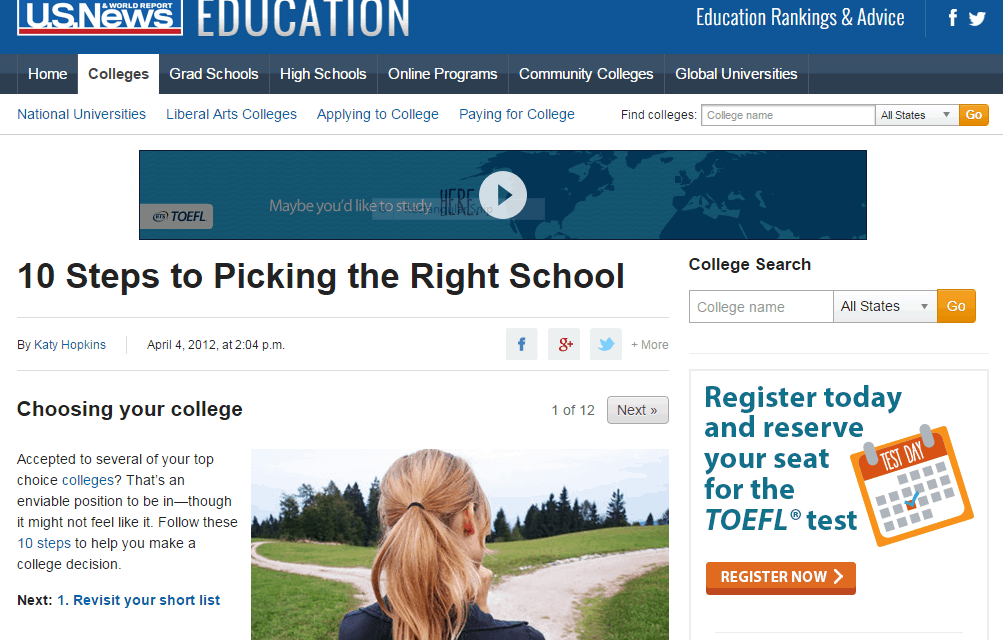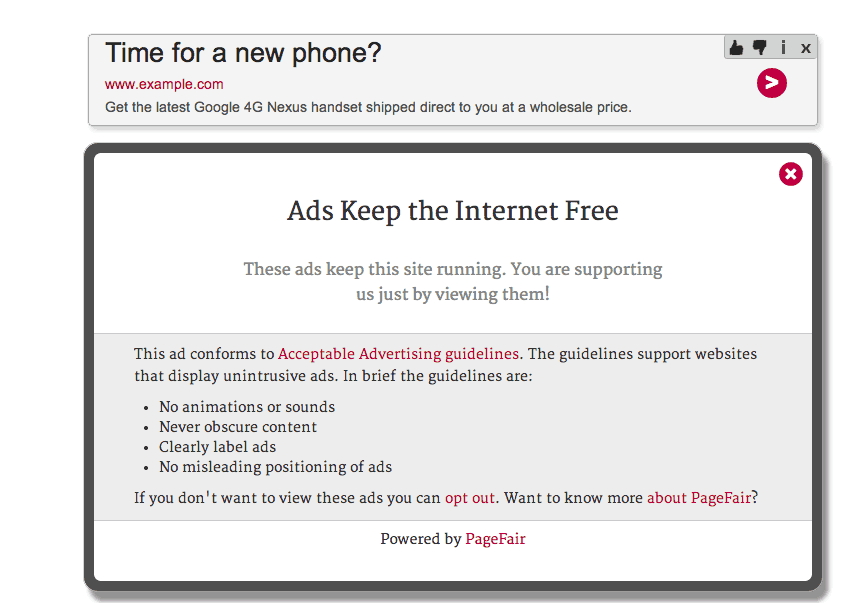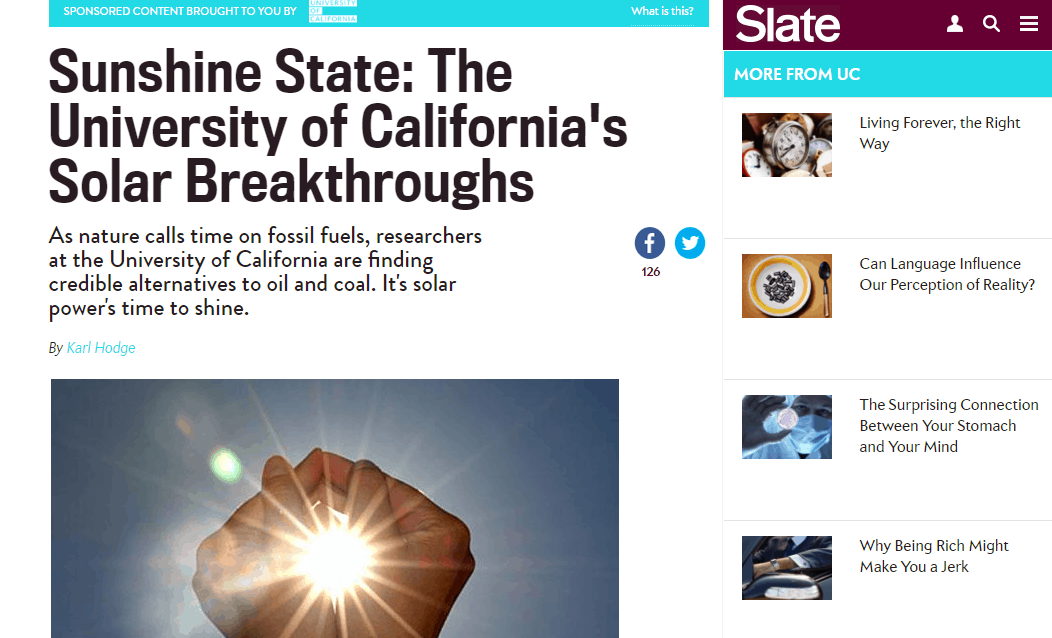
Last week, we discussed ways to improve click-through rates on your Facebook ads. So this week, we thought we’d follow up on the subject of online advertising by looking at one of its biggest potential threats.
For digital marketers, 2015 was the year ad blocking suddenly became dangerous again. Browser plugins that prevent advertisements being shown to users have been around in some form or another for years, with the digital marketing industry surviving and thriving in spite of them. However, recent developments in ad blocking have renewed concerns among advertisers, publishers and marketing professionals alike.
The renewed dialogue about ad blocking was kick-started by Apple, who announced in June that its iOS 9 update would enable users to install ad blocking extensions on the new version of Safari. While ad blockers have always been available on desktop, this was the first time it had been a possibility on mobile devices.
With marketers having made big moves to shift their strategies towards mobile in recent years, this blow came at the worst possible time. Mozilla added to the problem by launching its own ad-blocking app for its iOS browser. Even Google got in on the act, with Chrome now automatically pausing all Adobe Flash ads.
How Is Ad Blocking Impacting Your Online Student Recruitment?
A recent report published by Adobe and PageFair shows a worrying 41% growth in the number of ad block users in the past year, and estimates the total lost revenue to publishers at around $21 billion. For education marketers, the report made particularly worrying reading. Education was the fourth most affected industry, with 16.9% of all ad blocking activity taking place on sites falling into that category. Moreover, the majority of adopters are said to be young, tech savvy millennials; an important target market for many schools.
Here’s a detailed graph of these statistics from the Adobe/PageFair report:

How Ad Blockers Work: A Guide for Student Recruitment Professionals
So what exactly is being blocked by these plugins? Different ad blockers work from different algorithms, and have different criteria about what they consider acceptable to display to users. Taking the most popular extension, Adblock Plus, as an example, we can see that their features could have a far reaching impact on a school’s overall marketing strategy.
In its default settings, Adblock Plus blocks everything from pop-ups and banner ads that use flash to Facebook Ads, and even has the capacity to block ads in YouTube videos. As a show of recognition that many publishers depend on advertising for revenue, Adblock does have an ‘allow acceptable ads’ setting, designed to permit unobtrusive ads to display – but as you can see from the criteria below, it places great restrictions on what advertisers can do:

The ‘acceptable content’ can also be customized by users, who can even go as far as to block all ads from their browsing. When this option is enabled, it isn’t just display advertising that is affected, as even standard pay-per-click ads on Google are hidden. In addition, Adblock offers a feature that disables social media buttons on websites, to stop them from sending information about your browsing habits to social media servers. This feature could have a seriously detrimental effect on an institution’s social media, content marketing, and organic SEO strategy.
Example: Take a look at this page from usnews.com showing a banner and skyscraper ad from Educational Testing Service (ETS) advertising their TOEFL program. This appears to have been part of a takeover campaign which also included an overlay ad with a data capture form. The ads have been specifically targeted to appear on an article about choosing a college, and include flash elements. With ad blockers, which are popular among the demographic group likely to read this piece, none of these ads would be displayed.

The net result of the increase in ad blocking for advertisers is a decrease in impressions, lower click-through rates across the board, and fewer conversions. The programs also create measurability issues. Certain ads, such as those on Google and Facebook, aren’t technically being blocked by these plugins, just hidden from users. That means that you won’t see a decrease in impressions, and schools will have to work harder to maintain and monitor their campaigns on a day-to-day basis to ensure their money is being well spent.
Fighting Ad Blockers with Technology: The Right Option for Schools?
A number of third party developers have introduced potential solutions to the ad blocking challenge. Some, such as Yavli, take advantage of technical limitations in ad block technology, switching the origin domain of ads in order to slip undetected past the blockers. Others, such as PageFair, offer a compromise solution, detecting ad blocking software for clients, and switching out their ordinary advertisements for specially designed alternatives which meet the ‘acceptable ads’ criteria:

Both of these solutions have their limitations. As you can see from the example above, PageFair’s alternative ad design is extremely plain. Restricting opportunities for advertisers to create unique, attention-grabbing display ads negates one of the main advantages the medium has to offer. As for Yavli’s approach, critics have been quick to point out that users will surely find a way to circumvent technological solutions like this. Indeed, Yavli has already experienced attempts from users to block their ads.
Meanwhile, some publishers have taken an aggressive route to preserving their advertising revenue streams. UK TV channels ITV and Channel 4 will not allow users to access their site without turning off their ad blocker entirely, while others, such as The Atlantic, offer users a subscription service as an alternative. While these efforts are understandable, they all amount to fighting against the direct wishes of your audience. For schools that are looking not only to get users’ attention but also to foster ongoing relationships with them, creating this sort of negative perception of your brand is not desirable.
How Schools Can Design Ads To Get Around Ad Blockers
It’s important to note that the rise in ad blocking has come about for a reason. The Adobe/PageFair report found that the general consensus among Adblock users was that their pages had become oversaturated with complex ads, which increased load times and data costs for the user.
Users indicated they would be willing to accept some level of advertising as long as it is unobtrusive. This fits into the PageFair model of plain, text-only ads. The big question is: Can an ad, which is specifically designed not to attract too much attention, attract enough attention to make it worthwhile?
One possibility for ad creators is to focus on eye-catching phrases and effective calls to action in their ads. Since text is all an advertiser has to work with, they need to really make each word count.
Example: PPC ads with eye-catching text could possibly be appropriated into plain text formats that fit Adblock’s standard criteria for acceptable content. Look at the ads at the top of the page below – would you notice them if they were banner ads on a website?

Using Other Channels To Bolster Your Student Lead Generation Strategy
In the face of such a steep challenge, the reaction of many marketing agencies has been to simply encourage clients to divest, and redirect their efforts towards other marketing avenues. Focusing more on organic SEO and having an effective recruitment content marketing strategy is definitely an option if you’re suffering because of ad blocking. Education marketers should also consider retargeting campaigns, seeking to advertise to prospective students who have already engaged with their schools, in order to see more worthwhile returns.
Another option to consider is native advertising, which is integrated into the regular content of a webpage, usually well enough that ad blockers cannot detect it. As more and more high profile publications begin to offer this service, the options for schools to use the medium to reach specifically targeted users should grow.
Example: The University Of California recently had great success with a native advertising campaign for online magazine Slate.com. The series of articles, entitled Breakthroughs, highlighted some of the college’s more noteworthy research. One particular article amassed more than 7,000 likes on Facebook. Slate’s native advertising agency SlateCustom claims to deliver 100 million native ads per month, and is just one example of a well-established online publisher moving into this area.

The cold, hard truth is that none of these options offer a quick-fix solution to the ad blocking problem. Schools who have a well-devised online student recruitment strategy are already aware of the value of inbound marketing channels, and those who invest heavily in outbound do so because it helps them reach an audience that their inbound activities don’t.
If a school’s digital campaign is suffering as a result of ad blocking it may be in need of a complete overhaul, carefully evaluating the existing advertising strategy, and finding effective ways to reach the same audience through various other channels where possible. And of course, it’s important not to discount ads altogether. While ad blocking is growing, users of the technology still comprise only a relatively small portion of the online population. With more careful consideration, design and targeting, advertising can still very much have a place in your school’s student lead generation strategy.






